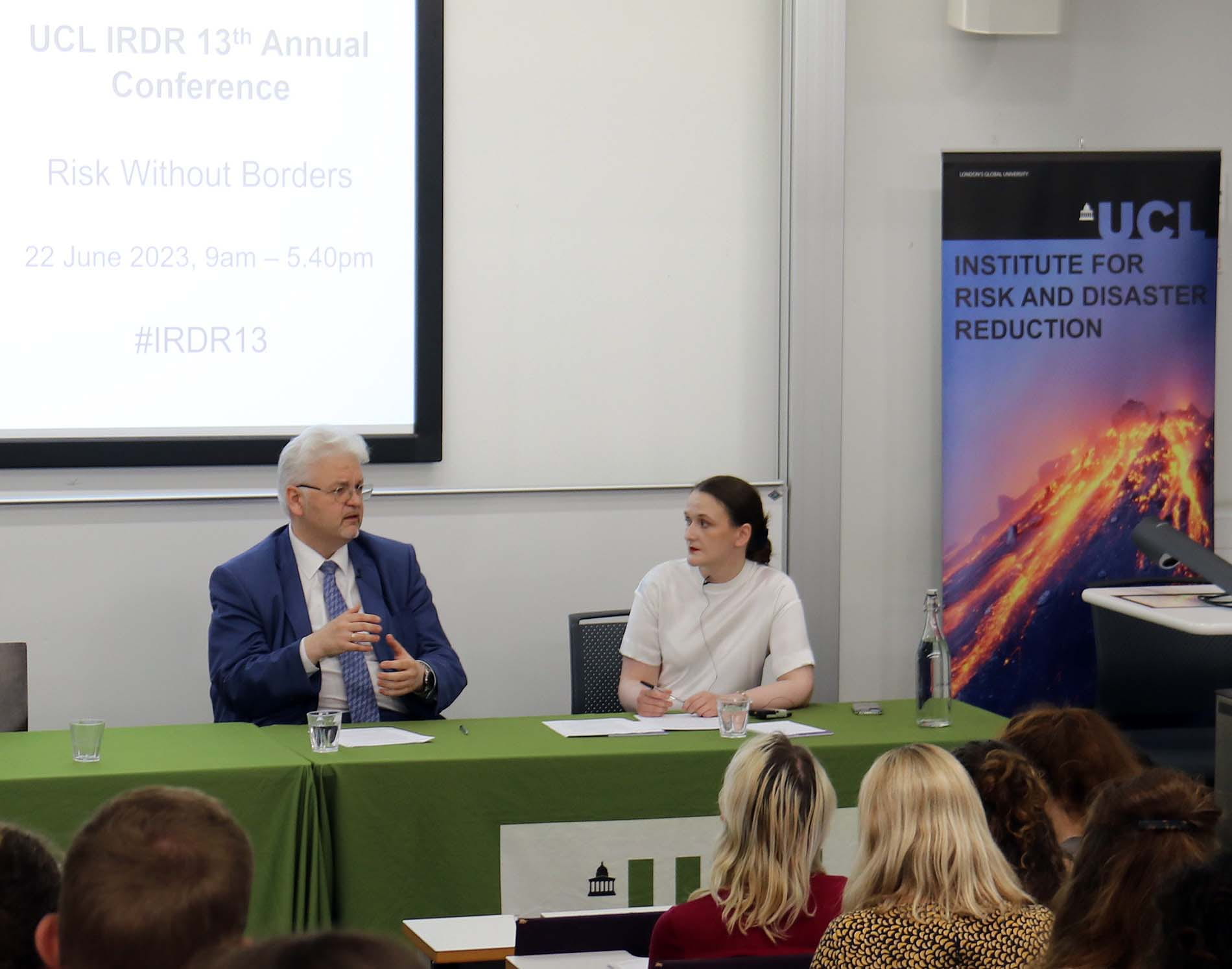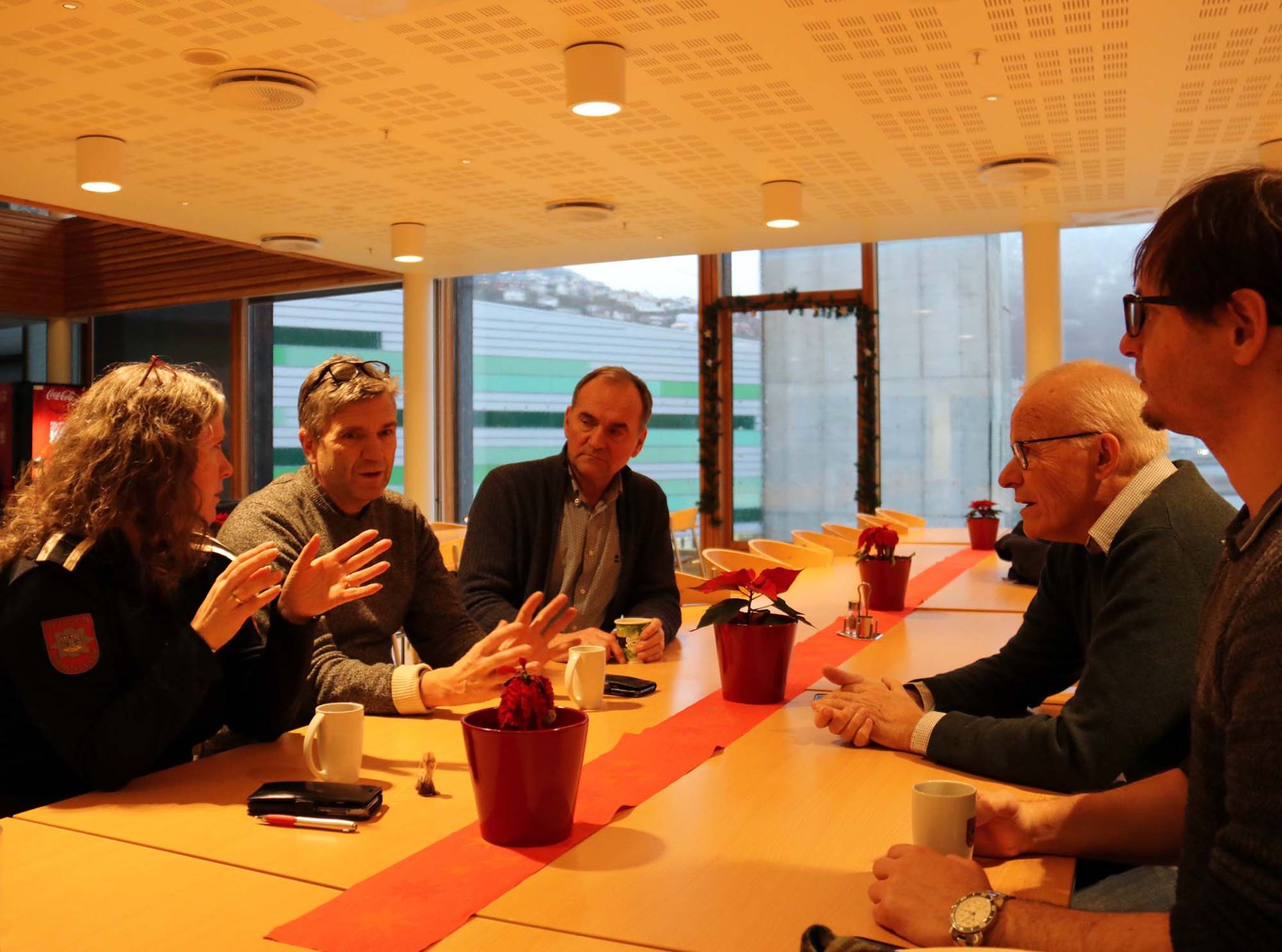Following a challenging year of managing natural hazards, including COVID-19, this one-day online event provided thought-provoking talks, interactive discussions and online networking opportunities on why warnings matter. In addition, the UCL Warning Research Centre as part of the Department of Science and Technology Studies was launched. The event explored the role, design, use, and evaluation of warnings for different hazards from different stakeholder perspectives to examine how effective people-centered warning systems can be developed and help to be prepared for both the expected and unexpected. The event was hosted by the Institute for Risk and Disaster Reduction and the Warning Research Centre.
On the 23rd of June, the UCL Institute for Risk and Disaster Reduction welcomed researchers, students, practitioners, policymakers, the media and the general public to a day of thought-provoking discussions on why warnings matter, and how we can do better at warnings both prior and during crises for all hazard types. Our in-house and guest experts presented a global perspective on the latest research and analysis through talks, interactive discussions and in conversation. We explored multi-dimensional aspects of warnings, considering their physical, social, economic, environmental, institutional, political, cultural and gendered dimensions, and the challenges involved in making warnings successful to mitigate against losses.
This blog is part one of a series presenting the key findings from the conference proceedings. The rapporteurs whose notes form this material are Calum MacKay and Simone Phillips who are both from the University of Glasgow on the MSc Earth Futures Programme.
Part One.
Panel Discussion 1: Warning Systems ‒ Exceptional versus expected events
The presenters for this session were Dr. Mickey Glantz, University of Colorado, Dr. Daniel Straub, Technical University of Munich, and Rebekah Yore, UCL. The session was moderated by Dr. Joanna Faure Walker, UCL.
Summaries of each presenters’ arguments are as follows:
Mickey Glantz
Not everyone considers a warning a warning. There are 5 key factors to warning hesitancy: complacency, convenience, confidence, low levels of trust, calculation of individual engagement. We don’t research the risks, collective responsibility is lacking as people focus on themselves. Emotional responses are common, not rational. There are also two types of people in hazard scenarios: risk averse people and risk takers.
Early warning systems are a chain. To make them more effective the lead time needs more attention. We need to create more lead time in order to get the warning to people earlier and through the system quicker.
Forecast hesitancy also plays a key role in effective early warning systems. We discount previous disasters we don’t learn from them, therefore we reinstate old vulnerabilities.
Readiness is also missing, society doesn’t have resources for long term preparedness.
Daniel Straub
Calculating the effectiveness of warning systems. If people think it’s a false alarm they won’t comply. This then creates a child who cries wolf scenario for future hazard warnings. We must find the right balance between detection rate and false alarm rate.
It is challenging and near impossible to quantify effectiveness but can still help the study of warning systems.
Rebekah Yore
It is important to identify the vulnerable population when deploying early warning systems. Failure in one element of the warning system can cause failure for the entire system.
Her research focuses on 3 case studies, all islands that are used to hazards: Japan 2011- Tsunami, Philippines 2013- typhoon and Dominica 2017- Hurricane. In all case studies not one warning system reached everyone, therefore these places need multiple types of warning. Some of the issues with the current warning systems were that interestingly modern smartphone warnings did not reach people. There was also mixed messaging from different agencies and government sources leading to room for interpretation from locals. Furthermore, issues such as poverty were not taken into account.
Finally, it must be noted that Individual and group risk perceptions are always changing and are dynamic.
This discussion was then followed by an address to questions from the audience, which are summarised thus:
How do we deal with both false alarms but also misinformation particularly in the context of social media or governments giving misinformation? How can we include groups who are not familiar with local warning systems like tourists or newcomers?
Mickey Glantz
Tourists have never seen a false alarm so unlikely to be affected in the same way in a real event by locals who have faced false alarms. Use of drills is helpful because one of the issues that comes up in the social sciences is that we all recognise that warnings need to be built into our everyday lives. We need to practice them as a way of living rather than just facing them when a hazard approaches. What has become practice then takes over and people are able to respond really quite calmly and really quite cohesively as Mickey thinks drills are a really good mechanism for embedding some key practices that help to familiarise through everyday life with some lifesaving rules.
What can we do to protect assets and livelihoods in the context of warnings?
Rebekah Yore
It is something that requires more research. Preparation mechanisms such as micro insurance for example are very important. So it may be that a mechanism that allows people to put things out and places structures in place before it occurs can help to protect some of those assets and livelihoods. Whether this means the ability to be able to pack things up and leave a location, or ability to be able to move, or an ability to be able to put certain protective measures in place. Maybe not save everything but save something or save enough.
Mickey Glantz
We don’t understand probabilities. We don’t understand nature. Many people don’t really understand the risks in their area. These perceptions become reality, if our perceptions are wrong the actions we take based on them have real consequences. So we tend to look at disasters as in many cases one and done. But that’s not reality.
In one sentence what change do you think needs to occur to help with warning for exceptional events in an environment that does have expected events?
Daniel Straub
Understanding things through quantification is also to make use of all the data that we can now collect. The social sciences have a better understanding and also have models of factors that make a difference, and it would be useful for social science to do more with quantification in their research.
Rebekah Yore
Addressing structural inequality and addressing why people are disadvantaged and why other people aren’t. I think let’s just put our money where our mouth is; preparation is key.
Mickey Glantz
We have to put more emphasis on readiness and preparedness. People can get ready more easily than they can get prepared because they don’t have the resources. So, warnings are very important to them, I feel we have to push readiness as tactical responses to warnings and threats, as well as long term preparedness which seems to fall to governments and larger organisations. Readiness is for me and preparedness is for the community to deal with.
Next up in this blog series will be notes on “Warnings and the launch of the Warning Research Centre”, keynote speech from Assistant Secretary-General and Special Representative of the Secretary-General for Disaster Risk Reduction in the United Nations Office for Disaster Risk Reduction, Mami Mizutori.
Watch the full conference on youtube here!
Conference URL:
https://www.ucl.ac.uk/risk-disaster-reduction/events/2021/jun/ucl-irdr-11th-annual-conference-why-warnings-matter-and-ucl-warning-research-centre
Conference Rapporteurs: Simone Phillips and Calum Mackay
Conference Convener: Dr. Carina Fearnley
Please email us for any further information at IRDR-comms@ucl.ac.uk
Or check out our website: https://www.ucl.ac.uk/risk-disaster-reduction/
Institute for Risk and Disaster Reduction (IRDR), University College London (UCL)
Gower Street, London WC1E 6BT, United Kingdom (UK)
Filed under Expert commentary, Guest commentary, IRDR Events, IRDR funded travel and projects, IRDR missions and projects, Miscellaneous
Tags: annual conference, disaster, early warning, institute for risk and disaster reduction, IRDR, rdr, reduction, risk, UCL, warning research centre
No Comments »

 Close
Close




